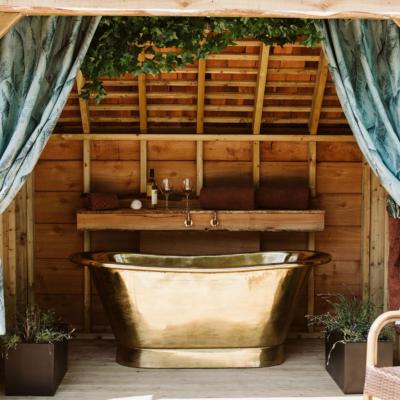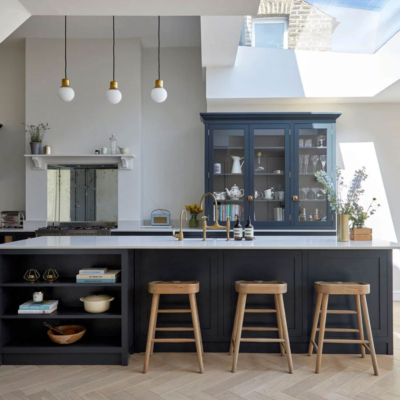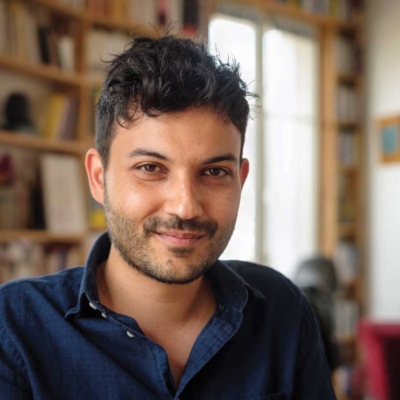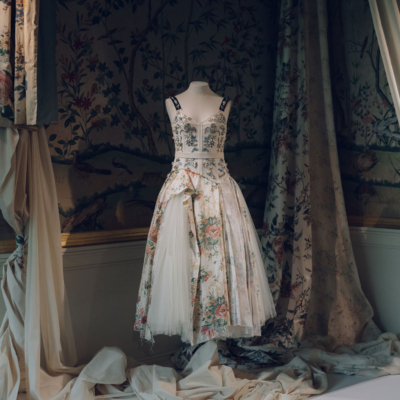After more than five years of research, the Final Report of the Commission of Investigation into Mother and Baby Homes was released yesterday, January 12, revealing stories of appalling conditions, cruelty, emotional abuse and high infant mortality in a series of State- and religious-run institutions in Ireland from the 1960s onwards. Who were the women? What happened to the children? And how was this level of mis-abuse allowed to continue for decades? Speaking about the report Taoiseach Michael Martin said, “We did this to ourselves as a society. We treated women exceptionally badly. We treated children exceptionally badly.” Survivors have cited “inaccuracies” in the report, and say a State apology does not go far enough: an admission of responsibility is required.
Below is an excerpt from the executive summary of the Final Report of the Commission of Investigation into Mother and Baby Homes … The following summary has been edited and condensed.
There were about 56,000 unmarried mothers and about 57,000 children in the mother and baby homes and county homes investigated by the Commission. The greatest number of admissions was in the 1960s and early 1970s. It is likely that there were a further 25,000 unmarried mothers and a larger number of children in the county homes which were not investigated; admissions to county homes were largely pre-1960.
While mother and baby homes were not a peculiarly Irish phenomenon, the proportion of Irish unmarried mothers who were admitted to mother and baby homes or county homes in the 20th century was probably the highest in the world.
The Women
The women who were admitted to mother and baby homes ranged in age from twelve years old to women in their 40s. However, 80 per cent were aged between 18 and 29 years and this was remarkably consistent across the larger mother and baby homes. 5,616 women, 11.4 per cent of the total for whom information about their age is available, were under 18 years of age. The Commission has not seen evidence that the Gardaí were routinely notified about pregnancies in underage women.
The number of admissions among women under 18 rose sharply in the early 1960s and it remained at a high level for the next two decades. While Pelletstown, followed by Bessborough, accounted for the largest number of admissions of women under 18 years of age, Dunboyne was the mother and baby home with the highest proportion of women under 18 years – 23.4% of total admissions.
Some pregnancies were the result of rape; some women had mental health problems, some had an intellectual disability. However, the majority were indistinguishable from most Irish women of their time. The only difference between the women in mother and baby homes and their sisters, classmates and work companions was that they became pregnant while unmarried. Their lives were blighted by pregnancy outside marriage, and the responses of the father of their child, their immediate families and the wider community.
Women were admitted to mother and baby homes and county homes because they failed to secure the support of their family and the father of their child. They were forced to leave home, and seek a place where they could stay without having to pay. Many were destitute. Women who feared the consequences of their pregnancy becoming known to their family and neighbours entered mother and baby homes to protect their privacy. Some travelled to Britain, for the same reason.
Ireland appears to be the only country where large numbers of unmarried pregnant women left their native country. However, it must be acknowledged that many of their fellow citizens also emigrated.
The profiles of the women in mother and baby homes changed over the decades, mirroring changes in Irish women’s lives. In the early decades most women who were admitted were domestic servants or farm workers or they were carrying out unpaid domestic work in their family home. In later years, however, many of the women were clerical workers, civil servants, professional women and schoolgirls or third-level students.
There is no evidence that women were forced to enter mother and baby homes by the church or State authorities. Most women had no alternative. Many pregnant single women contacted the Department of Local Government and Public Health (DLGPH), later the Department of Health, their local health authority, or a Catholic charity seeking assistance because they had nowhere to go and no money. Women were brought to mother and baby homes by their parents or other family members without being consulted as to their destination.
The overwhelming majority of women and children were maintained in the institutions by their local health authority but there were some who were ‘private patients’ and were paid for by themselves or family members. In many cases, they were cut off from the world and some were assigned a ‘house name’. The mother and baby homes gave women some assurance that their secret would be protected.
A total of about 9,000 children died in the institutions under investigation – about 15 per cent of all the children who were in the institutions.
The Children
The vast majority of children in the institutions were ‘illegitimate’ and, because of this, suffered discrimination for most of their lives. (This was true of all ‘illegitimate’ children). The vast majority of children born in the institutions have no memory of their time there but some stayed in the institutions after their mothers left and a small number were in institutions until the age of seven.
Before the availability of legal adoption (from 1953), children who left the institutions usually ended up in other institutions such as industrial schools or were boarded out or nursed out. After legal adoption became available, it gradually became the most likely outcome. There can be no doubt that legal adoption was a vastly better outcome than the alternatives previously available.
The very high rate of infant mortality (first year of life) in Irish mother and baby homes is probably the most disquieting feature of these institutions. The death rate among ‘illegitimate’ children was always considerably higher than that among ‘legitimate’ children but it was higher still in mother and baby homes: in the years 1945-46, the death rate among infants in mother and baby homes was almost twice that of the national average for ‘illegitimate’ children.
A total of about 9,000 children died in the institutions under investigation – about 15 per cent of all the children who were in the institutions. In the years before 1960 mother and baby homes did not save the lives of ‘illegitimate’ children; in fact, they appear to have significantly reduced their prospects of survival. The very high mortality rates were known to local and national authorities at the time and were recorded in official publications.
The Institutions
The women and children should not have been in the institutions. The conditions were regimented and institutional especially in the larger institutions and particularly before the 1970s but there is no evidence of the sort of gross abuse that occurred in industrial schools. There are a small number of complaints of physical abuse. The women worked but they were generally doing the sort of work that they would have done at home; women in the county homes did arduous work for which they should have been paid and there are a few other examples where this is also the case.
Many of the women did suffer emotional abuse and were often subject to denigration and derogatory remarks. It appears that there was little kindness shown to them and this was particularly the case when they were giving birth. The large institutions were regimented and they were inadequately staffed until the later decades. The atmosphere appears to have been cold and seemingly uncaring. They offered little sympathy or counselling to women who may have been rejected by their family and by the father of their child. There were no qualified social workers, or counsellors attached to these homes until at least the 1970s, and until that time, there is no evidence that women were given opportunities to discuss the circumstances of their pregnancy or future options for their child. Women were dissuaded from sharing their stories with their fellow residents, because of concerns to protect their privacy though such conversations might have offered some comfort at a traumatic time. Conditions improved in all respects in the later decades.
Many of the women found childbirth to be a traumatic experience. The overwhelming majority were first-time mothers and they were probably uninformed about childbirth. First-time childbirth can be frightening for any woman; it was undoubtedly worse for women whose pregnancy had devastated their normal life and resulted in their removal from home, family and friends. The trauma of childbirth must have been especially difficult for the many women who had no prospect of keeping their child. However, the hostile comments were not restricted to mother and baby homes. Letters written in the 1970s to Cherish describe hostile comments made by neighbours to women and their families. Women who were transferred from a mother and baby home to maternity hospitals to give birth, for medical reasons, were subjected to unfriendly comments by fellow-patients and their visitors.
Mother and baby homes were greatly superior to the county homes where, until the 1960s, many unmarried mothers and their children were resident. Conditions in the county homes were generally very poor; this, of course, was also true for the other residents who were mainly older people and people with disabilities. The women in county homes have been largely forgotten. They included women on a second or subsequent pregnancy and women from the poorest families. County homes admitted women with special needs, mental health problems, venereal disease or a criminal conviction, who would be rejected by a number of mother and baby homes. They also accommodated children who had special needs, including the children of married families. The accommodation and care given to these children in county homes was grossly inadequate; some of the descriptions are extremely distressing.
Until 1973 when the Unmarried Mother’s Allowance was introduced, most women had no realistic prospect of keeping their child unless they were assisted by their family. Regina Coeli hostel was the only institution that supported women who wished to raise their child. There is evidence that women who became pregnant after 1973 were not always aware of this State support and they continued to face pressure from family and perhaps from the staff in a mother and baby home to place their children for adoption.
The outcomes for children in mother and baby homes changed significantly from the late 1950s when legal adoption became common. For children who were in the Sacred Heart homes before 1960, the most common recorded outcome was that they left with their mother or a member of her family. This creates an impression that the child was brought to their mother’s family home and may have been raised in the family. However, the overwhelming majority of these children were placed ‘at nurse’, in foster homes, either privately by the woman or by her family, or through a charity such as the Catholic Women’s Aid Society. By the 1960s, however, 74 per cent of children leaving Sean Ross were adopted, and the number who were recorded as having left with their mother had fallen to 19 per cent, compared with almost 66 per cent in the 1940s. Dunboyne opened in 1957, by which time adoption was becoming more common, and two-thirds of the children born to women who returned to Dunboyne following the birth of their child, are recorded as being placed for adoption.
This is an excerpt from the Final Report of the Commission of Investigation into Mother and Baby Homes. You can read it in full on www.gov.ie. Today we remember the women and children who suffered while housed in Ireland’s mother and baby homes and the trauma they have been forced to carry with them throughout their lives. If you have been affected by any of the issues outlined above you can contact the Mother and Baby Homes Commission of Investigation Helpline via confidential freephone on 1800 80-66-88 (ROI Only) and +353-1-6445088 if calling from outside the Republic of Ireland.
LOVETHEGLOSS.IE?
Sign up to our MAILING LIST now for a roundup of the latest fashion, beauty, interiors and entertaining news from THE GLOSS MAGAZINE’s daily dispatches.









